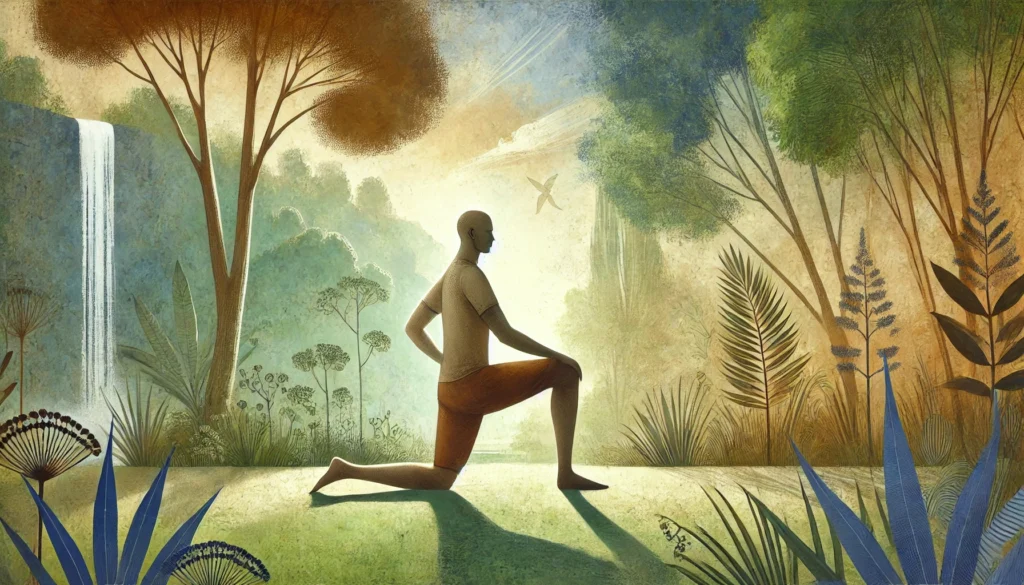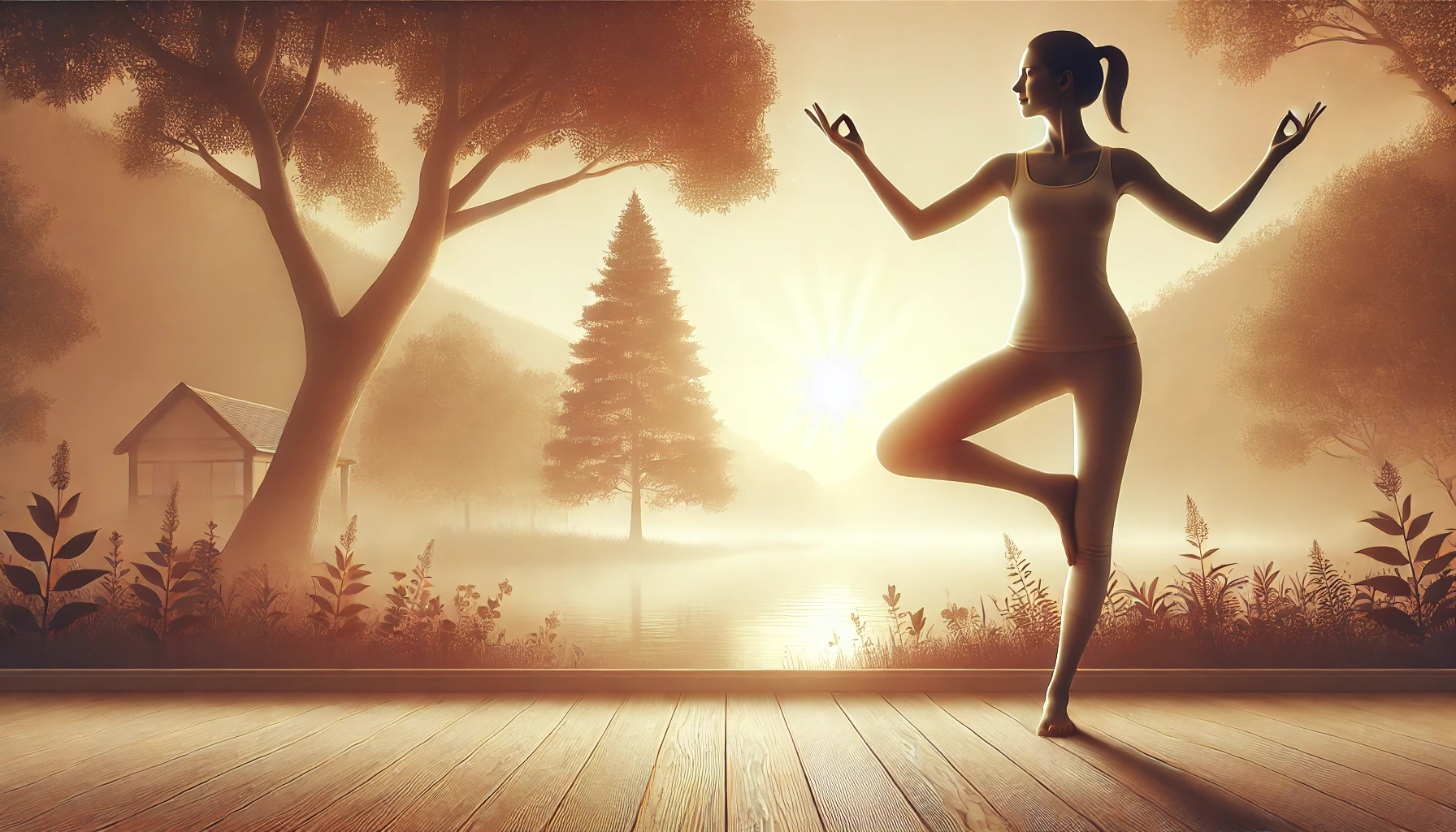In my early years, I was always engaged in various physically active sports and high sports. As I got older, however, I started to get downright occasional knee pain, which prevented me from doing the activities I had so much love for. Defyingly, I risked the venture of yoga, and oh boy, Yoga proved that the yoga poses that were introduced to me by my coach brought about significant improvement in my knee pain. In this article, I will be talking about the yoga poses for hip flexibility that became an advantage for me in my life and the way they have helped me to cut pain in my joint of the knee.
Understanding Knee Pain and Yoga
Not digressive manner of doing problems such as yoga poses in the treatment of knee pain has to be looked at first. The yoga practice focuses on expanding and stretching the muscles encompassing the knee joint, the flexibility of the muscles, and the bettering of the body’s general awareness. Through regular practices of yoga, I have become the one who can maintain my knees at a better level by reducing the stress that is often experienced by them during my everyday activities.
1. Mountain Pose (Tadasana)
Tadasana, or Mountain Pose, might be simple, but it does more than establish a strong foundation for an upright posture. The initial step is to align by standing with your feet as far apart as the width of your hips, and you should distribute your weight evenly among both legs. My quadriceps are engaged, and I slightly raise my kneecaps while at the same time tightening my core muscles. This exercise helped me to find my lost posture and healing the muscles holding my knee.
2. Chair Pose (Utkatasana)
However, the flexing of the quadriceps and the legs is quite nice with it, nevertheless, the chair pose helped a lot to stabilize them. The start is in the Mountain Pose with gradually bending my knees as if I want to sit on an invisible chair. As I send my weight backwards to my heels and ensure my knee does not go over my toes, this action is like stretching the muscles around my knees and, in the process, improves my balance and stability.
3. Warrior I (Virabhadrasana I)
Warrior I is one of the main positions to be the strength and the stability of the legs, but another one is the better stability of knees. The main step is making the first step by bringing one foot forward over me, as far as possible, keep the knee at a 90-degree. This exercise has been my source of power for the quadriceps, hamstrings, and calves, which has given my knees the best back up since then.
4. Triangle Pose (Trikonasana)
Triangle pose can be seen as a good exercise for the stretching and strengthening of the muscles that surround the knees. I stand with my feet wide open and turn one of the feet to the side, and at the same time, I try to keep my arms as straight as I can. The pose helps me to improve hip flexibility and adduction while decreasing the knee sideways.
5. Bridge Pose (Setu Bandha Sarvangasana)

The Bridge Pose has been very beneficial in terms of strengthening my glutes and hamstrings, which are solid supports for my knees. I lie on the ground, bend my knees, and lift my hips as high as possible. This asana mainly focuses on the lower limbs and hence, the pose helps to lessen the pressure on the lower back region. However, only perform it under the guidance of a teacher to make it more progressive without any strain.
6. Supine Hand-to-Big-Toe Pose (Supta Padangusthasana)
This is an exercise giving a good improvement of flexibility in the muscles of the hamstrings and calves. I lie on my back and lift one leg straight up and I use a strap pulled tight to keep one leg up, also, I can hold my big toe. The stretching helps in immense relief from the discomforting sensation in the behind of my legs which is usually causing me knee pain.
7. Child’s Pose (Balasana)
Child’s pose is my staple when it comes to soft knee stretching and release. I sit on the floor, keep my heels under me, and extend my hands forward. The position allows me to stretch my knees, and I get relieved of tension by moving my lower back and hips along as well.
8. Low Lunge
goeterag$a]>=ults in the training and testing phase, and in situ of feasibility study limitation. It helps stretch the muscles around the knees, and my overall leg flexibility is improved.
9. Reclined Spinal Twist
In no instant does the practice bear directly on the knees, yet the reclined spinal twists have been the means for me to release the pressure in my lower back and hips, which ultimately reduces the overall pain in the knee. I spread my back on the floor, holding my knees to my chest before pulling them in one direction, awaking only one part of my back at a time but I always kept my shoulders flat on the ground.
10. Tree Pose (Vrksasana)
By doing the Tree Pose I have a better balance and stronger muscles around my knees. I balance with one foot while the other part of the sole is placed on the inner side of my thigh or calf. It can help the strengthening of the muscles around the knees and promote better stability and control of the joints.
My Journey to Pain-Free Knees
These are the yoga poses that made me feel the utmost transformation in my knee pain, after consistent practice, of course. I just gave my body time to adjust during the first few days, then I went to the next phase by concentrating on the right posture and being faithful to what my body signals me. However, I must admit that after a while there was a significant improvement in my knee health, which was followed by my general mobility.
I would like to emphasize that I practiced the slow approach and apart from this I was always consistent. I never pushed myself past my limits. If a pose was difficult, I did not do it. In a word, I did my best, and I did them more frequently. If time permits, always have shorter activities instead of one longer one.
Conclusion
With constant practice of these yoga techniques, I have personally felt a great recovery in the case of knee pain. I can now boast that along with regaining the ability to partake in physical activities, I have furthered my bond with my body and I am in better shape in general.
If you’re one of the many individuals experiencing knee discomfort, try doing Yoga as a means of treatment. Besides, be ready to seek medical attention or the help of a professional yoga instructor before starting a new exercise program, especially if the knee hurt is a chronic issue you have.
Frequently Asked Questions (FAQs)
1. How long did it take for you to notice improvements in your knee pain after starting yoga?
From my angle, within the first weeks of my consistent practice, I initially (at least, subtly) felt the easing of my knee pain, yet the big magnitude of the effect appeared only after about 2-3 months of regular practice. Keep in mind that everyone responds differently to treatment and the improvement time can vary with each person. My affirmation is that the persistence pays off when the practice time is shorter but more frequent than the longer ones with a lot of breaks.
2. Are there any precautions I should take when practicing yoga for knee pain?
Absolutely. Taking into account how I made my personal journey, here are some precautions that I want to suggest you observe if you get yourself involved in the same process as I did:
1. Be sure to do a good warm-up before you work on the other yoga poses.
2. Never violate your body’s warnings and stop immediately; when you feel the pain is too much, then antagonize it.
3. Use any props, like blocks and straps, if it is necessary.
4. Focus on applying right alignment to the body instead of only being proud of reaching perfection in different poses.
5. Ask for diagnosis and treatment advice from experienced healthcare experts or yoga teachers if you have some specific knee problems.
6. The gentler poses should be a must-do plan to get stronger with the hip area, altering it to go more intense as you acquire more strength and flexibility.
Make them know that pain relief is our goal, so it doesn’t do any good, causing more pain than the present one. Just be patient to get to know or think about what is best for you and your body in that process.
